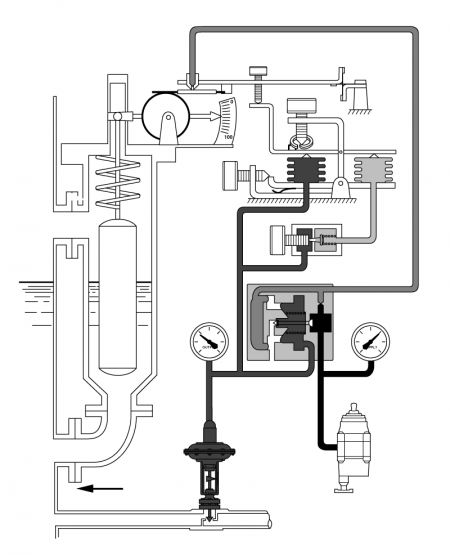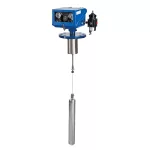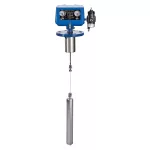The product
Displacer controllers technology
The key elements of the Modulevel® pneumatic control are magnetic coupling, which allows the controller to be mechanically isolated from the sealed sensing unit; the range spring, which translates the change in buoyancy force to motion of the attraction ball; and the controller head, which provides a modulated pneumatic signal in direct proportion to the input from the vertical motion of the attraction ball

Features
- Stable output signal is unaffected by surface turbulence
- Standard models handle pressures to 4265 psig (294 bar)
- Good for process temps. from -150° to +700° F (-100° to +370° C)
- Visual indicator is independent of air supply
- Accurate output signal provided over a wide specific gravity range
- 316 stainless steel displacer and trim, Inconel and 316 SST range springs (consult factory for Hastelloy displacer)
- Controller head may be removed without disturbing pressure boundary
- Easily calibrated without moving tank liquid level, for reduced installation time and cost
Options
- Pneumatic to current interface transducer for electronic control
- Electric high and low limit switches
- Sealed or flanged chambers
- Direct or reverse acting output signal
- Level ranges from 14 to 120 inches (356 to 3048 mm)
- Transmitter or differential gap options
Operating principle
The key elements of the MODULEVEL pneumatic control are the magnetic coupling, which allows the controller to be mechanically isolated from the sealed sensing unit; the range spring, which converts the change in buoyancy force on the displacer into motion; and the controller head, which provides a modulated pneumatic signal in direct proportion to the motion of the spring.









